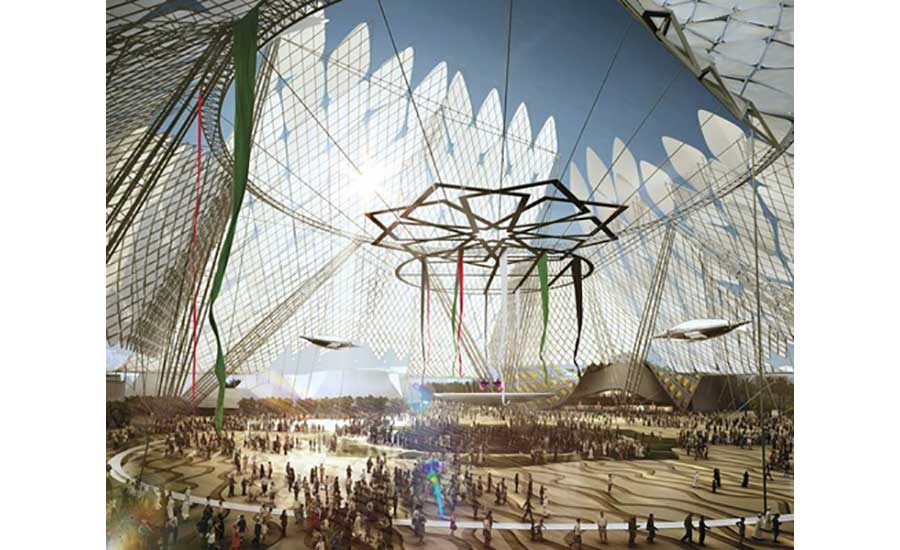Uneven Building Sector
The general buildings market has been growing but unevenly. "Corporations have an enormous amount of pent-up capital that we are seeing released in new projects," says Mark Chen, senior vice president at Heery. He says health-care spending has been cautious as clients are retooling for the future, which requires changes to their physical plants.
However, state-funded work, especially higher education, remains relatively slow, and larger health-care capital projects are relatively less common due to health-care client concern about their future business, says Phil Harrison, CEO of Perkins+Will. "The health-care market has moved away from the mega-projects and into more renovation and repositioning of current space," says Carl Roehling, SmithGroupJJR CEO. Further, one of the hottest building markets, multi-unit residential, may be nearing the saturation point, says J. Peter Devereaux, president of Harley Ellis Devereaux.
Sustainability continues to be a major factor in the market. Callison recently introduced Matrix by Callison (Matrix.Callison.com), a free, online sustainability design tool. "With easy online access and user-friendly navigation, Matrix by Callison evaluates more than 80 specific strategies for design performance, serving to identify the top strategies for any given project anywhere in the world," says John Jastrem, CEO.
Jastrem says the firm has used the tool internally for the past six years on more than 90 projects— accounting for more than 18 million sq meters. "We are sharing it with the industry because we believe this is a key tool that can have a big impact on the sustainable-design industry globally," he says.
Another trend with commercial clients reflects changes in work-space planning. "Increased density within office buildings continues to be a factor in the office market," says Steve M. Smith, Cooper Carry principal. He says companies are reducing their real estate costs by putting more people in less space. "Owners will need to keep an eye on the increasing populations within their office buildings because the increased densities can impact the performance of building systems, such as elevators and mechanical, electrical and plumbing systems."
This trend also means more opportunities for redesigning and rehabilitating existing facilities. "Instead of creating office space, many developers and owners are looking at repositioning their existing portfolio. In our D.C. office, we are currently involved in projects that repurpose older office buildings for educational, hospitality and residential uses," says Smith.
Alternate project delivery has become an increasing presence in the buildings markets. Some design firms are reacting to take advantage of this trend. "Burns & McDonnell created [in 2013] a department within our construction group that is focused on commercial projects such as retail, office buildings and similar facilities, and we believe our ability to dedicate integrated design teams of architects, engineers and construction managers will be very important," says Graves.
"Integrated project delivery continues to grow as the preferred delivery method for owners, so it is important that we continue to strengthen our design and construction capabilities and build strong partnerships with contractors, financiers and other consultants," says Keen of HDR. "We must bring additional value to the team, outside of traditional design expertise."
But for many architects, this trend toward design-build means fighting to maintain their role in safeguarding the design against budgetary pressures by the rest of the team. "Page is fiercely determined to advocate for the quality of the built environment through our vital leadership role of the design process on these 'conglomerate' teaming arrangements, regardless of the manner in which that quality is measured," says James M. Wright, senior principal of Page. Wright says design firms with experience in design-build and P3 teams in the buildings market are best positioned to safeguard the design.
In the wake of several natural disasters, especially the flooding and blackouts in the New York City metropolitan area that came in the wake of 2012's Superstorm Sandy, building designers are becoming more focused on building resiliency. "Designers will focus on creating buildings that account for the possibility of natural disasters," says Harrison of Perkins+Will.
Boomtown
The U.S. shale oil-and-gas boom has drawn many design firms, but the market is not for the faint of heart. "The opportunities in this sector develop quickly, move fast and require a certain entrepreneurial streak," says Krause of MWH Global. "This approach to growth and risk management has created some exciting opportunities for us, and we continue to have a bullish view on opportunities in this sector."
The oil-and-gas boom in the U.S. is making an impact on the international market, too. "India has announced a portfolio of LNG import terminals in the planning stage," says Dean Oskvig, CEO of Black & Veatch Energy. He says these terminals are designed to take advantage of the opportunity to import cheap gas from the U.S. "I believe at least five of these terminals will be built in the next 10 years," he predicts.
The pipeline market also is booming. "We are still waiting for word from the [Obama] administration on the Keystone XL pipeline project," says Vincze of TRC. "However, considering the amount of pipeline projects that are in the permitting stage, if they all get approved and funded, there will be a serious shortage of people to do the work in two to three years," he says.





Post a comment to this article
Report Abusive Comment